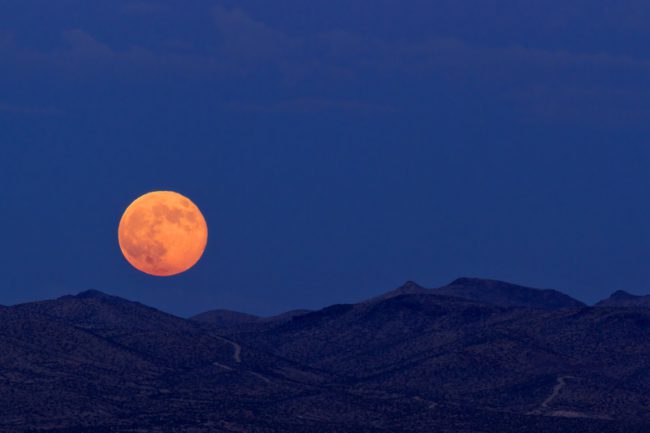We're all fascinated by a nice, big full moon. The way it glows is beautiful, mystical... even a bit spooky! But we think that most of us look forward to catching one in the night sky. And that's why you should keep your eyes extra peeled this weekend. Why?
Because the supermoon is coming!
An uneven orbit
To understand what the supermoon is, we need to look at two things: its orbit and its phases (shown above). The moon moves around the Earth in a slightly elliptical orbit. This means that the orbit is uneven—there is a point in the orbit when the moon is closer to the Earth than at any other point. In addition, because the moon only shines because it reflects light coming from the Sun, it has phases that affect how it looks to us here on the ground. A full moon is when we see all of the "lit" half of the moon.
So a supermoon happens when these two things combine to give us an extra large and bright-looking moon. It is a full moon that occurs when its orbit is closer to Earth. Supermoons actually happen fairly often—around every 14 full moons will be a supermoon. Sometimes, you even get a group of supermoons in a row. But not all supermoons are created equal. And the one that we're about to see is going to be exceptional.
Largest since 1948
We're in a really healthy time for supermoons. There was one this past October and there will be one in December. But the one happening tomorrow is the most impressive of the three. The moon will appear to be around 15% larger and 30% brighter in the night sky than an average full moon. It will also appear even larger as it is rising up over the horizon. This is known as a moon illusion.
Finally, even though it won't be quite as big as this one, the third supermoon of 2016 will happen on December 14. After that, we won't have another supermoon as big as November's until 2034.
Whew! That's a lot to digest, right? For extra information, check out this video from NASA that explains even more about this phenomenon.
We'll see you outside on Sunday, you moongazers!
 An exceptional moon event is coming this Sunday. (© Sumikophoto | Dreamstime.com)
An exceptional moon event is coming this Sunday. (© Sumikophoto | Dreamstime.com)










Did you see the supermoon on November 14? I saw it and it was much bigger than the earth.
😥 😥 😥 😥 😥 😥 😥 😥 😥 😥 😥